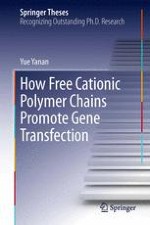2013 | OriginalPaper | Chapter
3. Revisiting Complexation Between DNA and Polyethylenimine: The Effect of Length of Free Polycationic Chains on Gene Transfection
Author : Yue Yanan
Published in: How Free Cationic Polymer Chains Promote Gene Transfection
Publisher: Springer International Publishing
Activate our intelligent search to find suitable subject content or patents.
Select sections of text to find matching patents with Artificial Intelligence. powered by
Select sections of text to find additional relevant content using AI-assisted search. powered by
